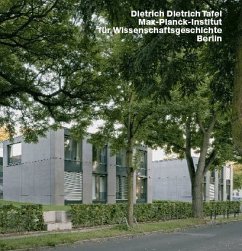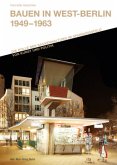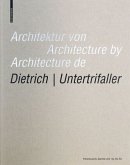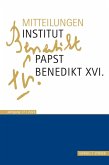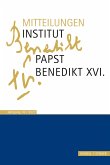Dahlem has developed in two different wayssince the early years of the 20th century. An importantscientific centre emerged on the site ofthis former royal territory south-west of Berlin,alongside a suburban villa colony. Elite researchinstitutes were established in Dahlem, with the intentionof creating a 'German Oxford', includingthe first institutes for the Kaiser-Wilhelm-Gesellschaft,founded in 1911. Then Dahlem was chosenas the location for the Freie Universität Berlinafter the Second World War.The Max-Planck-Gesellschaft commissioned anew building in these surroundings in order to providethe Institute for the History of Science, datingfrom 1994, with accommodation appropriate toits needs. The building was erected in 2004/05 toa competition design by the Stuttgart architectsMarion Dietrich-Schake, Hans-Jürgen Dietrich andThomas Tafel (who left the team after drawing upthe planning application).The buildings adjacent to the plot, which is borderedby streets on three sides, datemainly fromthe 1930s. Alongside the institutional buildings detachedhomes determine the local character. TheMax-Planck-Institut reflects the dimensions andstructure of its surroundings. Its height relates tothe two-storey homes; the building masses werestructured as eight connected, pavilion-like sections,which means that, despite its size, the instituteis reticent in its impact on the urban space.The symmetrical complex is built around a spaciouscourtyard with old chestnut trees. The libraryis the key element of the building, and so wasarranged around all four sides of the inner courtyard.Extensively glazed internal and externalwalls afford a wide range of views into the libraryrooms. This ensures a constant presence for theinstitute's most important set of working tools,and at the same time makes it accessible oververy short distances from various parts of thebuilding.Andreas Schätzke is an architectural historianliving in Berlin. His research fields include architectureand urban development in post-warEurope and the relationship between architectureand politics in the 20th century. Reinhard Görner,who also lives in Berlin, has worked as an architecturalphotographer for many years; he is heldin high regard by many eminent architects as aninterpreter of their work, including Peter Eisenman,Norman Foster, Jürgen Sawade, Hans DieterSchaal, Otto Steidle and Heinz Tesar.
Hinweis: Dieser Artikel kann nur an eine deutsche Lieferadresse ausgeliefert werden.
Hinweis: Dieser Artikel kann nur an eine deutsche Lieferadresse ausgeliefert werden.

